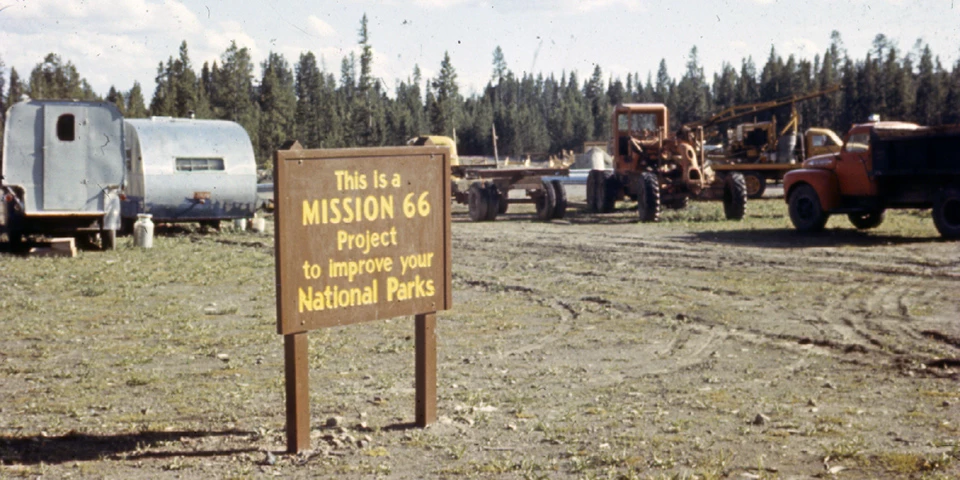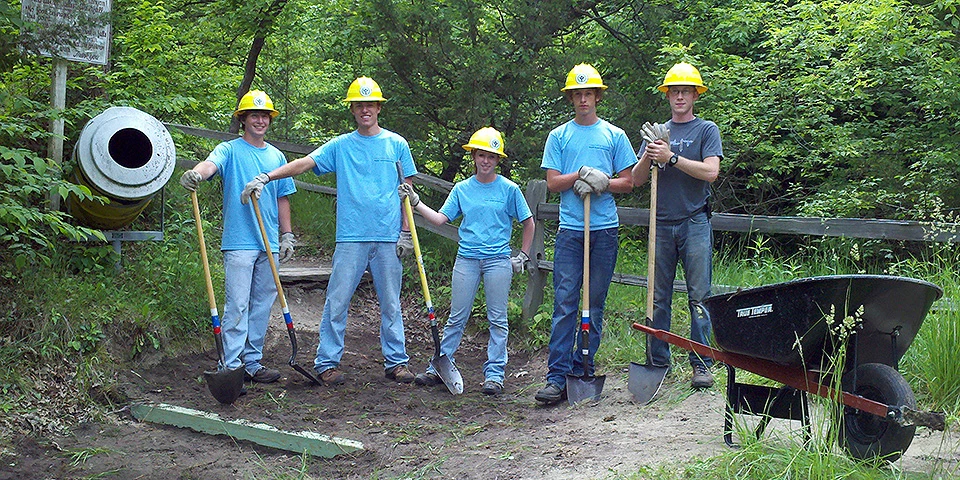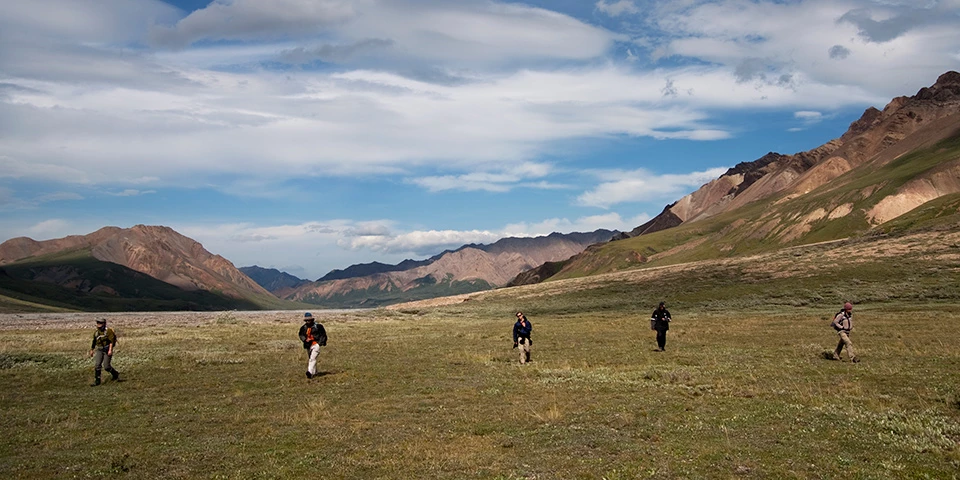Trails don't just take of themselves—park staff and volunteers work hard to keep trails safe for visitors. Trail crews consider many factors when they plan trail maintenance. Some trails have historical significance, and other trails may affect important natural areas where endangered species live. Another factor is the materials used to build the trail. Caring for trails from the late 1800s or early 1900s is especially challenging.
Mission 66
Trails in the NPS suffered in the 1940s and early 1950s. During this time, national efforts focused on World War II. Relief for trails came through the Mission 66 program, started in 1956. One of the aims of Mission 66 was to upgrade park facilities before the NPS turned 50 in 1966. Many trails needed some maintenance, and other areas needed new trails. Trail crews built short trails near visitor centers and other paths for educational purposes. They constructed self-guided nature trails and paved multi-use trails. In the 1930s, the Civilian Conservation Corps relied on locally available rustic materials. But Mission 66 standards were different. They required modern materials, such as pipe drains, concrete bridge forms, cut stone, and asphalt surfaces.
NPS Photo
Effects of More Visitors
By the 1970s, many trails were "loved to death." A growing national interest in recreation brought more visitors to parks. But at the same time, many parks had limited maintenance programs for trails. This combination resulted in extensive erosion along many trails.Park managers struggled to maintain trails and staff crews. Many turned to their local communities for help. A new generation of volunteer programs emerged, including the Youth Conservation Corps. Parks partnered with state-run conservation corps and local non-profit organizations. Today, these groups along with Volunteers-In-Parks often help trail crews maintain trails. Some parks have cooperating associations and friends groups that raise money to support trail upkeep. With the increase in visitation to national parks, visitors can assist with trail stewardship by practicing Leave No Trace principles.

NPS Photo
Laws That Affect Trail Management
The National Historic Preservation Act (NHPA) of 1966 established the National Register of Historic Places. It protects objects that are important in American history. These objects can include districts, sites, buildings, or structures. Some of these objects are accessed by trails that need to be preserved.The National Trail System Act of 1968 allows federal establishment and protection of significant long-distance trails. It designated the 2,174-mile Appalachian Trail a National Scenic Trail. In 1978, Congress amended the act to include other national historic trails, too. It includes trails that honor important routes of exploration or migration. It also protects trails that memorialize military action, civil rights, or commerce.
A 1996 EO protects Indian Sacred Sites. In important religious or ceremonial sites, some trail sections had to be closed or rerouted.
The Wilderness Act of 1964 established millions of acres of protected wilderness lands. These lands are set aside to use and enjoy in ways that will keep them wild for future generations. The act protects many of the country’s undeveloped trails from changes by mechanized equipment. At the same time, many trails were abandoned due to lack of use.
Some other acts affect all trails:
- National Environmental Policy Act (NEPA) of 1969
- Endangered Species Act of 1973 - This act protects habitat for threatened or endangered species.
- Clean Water Act of 1977 - This act provides guidelines to protect floodplains and wetlands.

NPS Photo / Neil Blake
Planning, Environment and Public Comment
The National Park Service prepares a variety of planning and environmental documents to help guide the management of parks. Any trail documents and projects open for public comment in the planning process will be displayed below. We encourage your participation.Documents Open for Public Review
Other Plans and Projects
A list of park projects without documents open for review may be found at https://parkplanning.nps.gov/.
Curated Trail Management & Maintenance Articles
Read about different trails projects in the NPS.
Last updated: June 28, 2024
